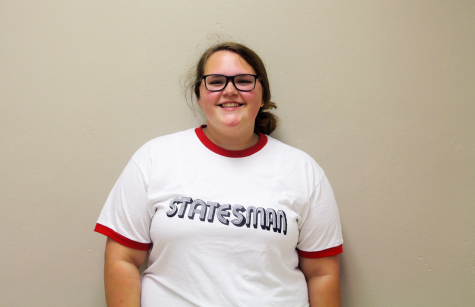The grading system needs an upgrade
Provided by the Sioux Falls School District
Students need to obtain an average rounded percentage of an 93 percent to receive an “A.”
January 10, 2019
Each school district has the opportunity to set their own grading scale. For the Sioux Falls School District, the grading scale used is a little peculiar. To obtain an “A” in a class, students need a 93 percent average compared to the 90 percent average in most college settings. This 3 percent increase may seem miniscule, but to students striving for excellence, that small percentage can have a huge impact on their GPA as a whole.
“I’ve gotten two B’s during high school and they have both been around a 92 percent,” said junior Brianna Geis. “Anywhere else this would have been an A, so I would’ve had a 4.0 GPA but now I don’t.”
The current grading scale does promote more challenge and competition which upholds the district’s value of excellence. With a higher percentage needed to achieve an “A,” it urges students to work harder to obtain the desired grade. However, with grades being a representation of the amount of work a student puts in, students that just barely miss the cut off can feel cheated. When this emerges, it gives way to a different problem: grade inflation. Students who just barely miss the cut off go to their teachers and ask if there is any way possible to change the grade. This leads to a teacher manipulating the student’s past assignment grades in order to obtain the desired grade.
Grade inflation is an entirely different problem, but the reality is that often times it is because our grading system is not an accurate representation of how students are performing inside and outside the classroom. Anywhere else, they would have obtained a higher grade, but because our grading system is skewed, it often misrepresents a student’s performance. With the strenuous amounts of school work these students complete, they deserve the chance to have their grades accurately reflect their effort.










Daniel Bethke • Jan 20, 2019 at 12:54 pm
I completely agree with this article. The time has come for the Sioux Falls School District to listen to common sense and reason. At a time when the VAST majority of B grades are above 90%, at a time when the SF district has some of the strictest grading requirements in the country, and at a time when all that shows up on a transcript is the letter, not the percent, SERIOUS CHANGE IS NECESSARY. To anyone reading this, I encourage you to fight and contact educational professionals with power to change the Sioux Falls system and repair previous issues. The status quo is not inherently good. It’s time for change. Us students really do have the power. We just need to fight for it and demand action to be taken. Everyone should contact superintendent Maher and other officials to change this. Talk about it. Make some noise. The time for change IS NOW. Thank you Genna for bringing attention to a key issue.